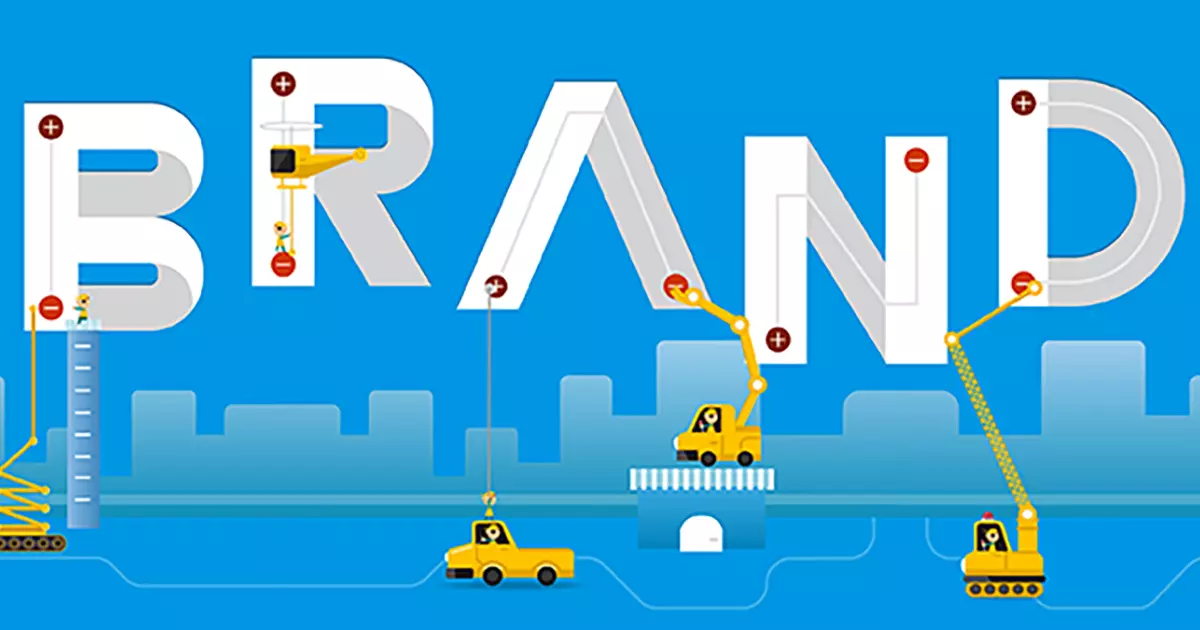The Internal Value B2B Branding Brings to Business Strategy

From Steve Jobs to Seth Godin, we’ve all heard about the external value of branding. But branding has just as much value internally.
From Steve Jobs to Seth Godin, we’ve all heard about the external value of branding. And for good reason.
B2B branding builds a bridge between all the good work and services you’ve provided in the past and the expectations about how you might help a customer or prospect in the future.
It’s not just your reputation – positive or negative -- for building great products, solving engineering challenges or achieving incredibly high quality standards. It’s all those things and more.
Aligning your B2B brand with your business strategy simply reflects reality, making sure customers hear in your marketing what they should be experiencing in their world.
And, conversely, a branding program that’s out of synch with your business reality is not just a waste of time and money, but, more importantly, a source of confusion in the marketplace.
B2B Branding’s Other Effect
But branding has another sphere of influence. One that is just as important. Maybe even more important.
And that’s the value it has internally with your employees, business partners, and other stakeholders.
Here’s why …
We’ve all been witness to occasions where companies have spent months or even years creating an elegant business strategy. PowerPoints are created. Meetings are held. Memos are written.
But when it comes to impacting corporate behavior in a meaningful way … nothing happens. The binders linger on a shelf somewhere, gathering dust. Everyone knows there’s a strategy … but only a few know what it means, what’s expected of them, or how to apply it.
Business consultant PwC confirmed the problem of strategy implementation in a global survey of 4,400 senior executives, noting that about 80 percent admitted that their overall corporate strategy was not well understood, even within their own companies.
What a loss. What a tragedy. It’s like writing the great American novel and leaving it in your desk drawer. All that good work gone for naught.
And that’s where a good branding campaign can make a difference, provided the strategy itself is strong and consistent with the company’s past, present and future.
B2B Branding: A Rallying Cry
A good branding program captures that corporate strategy, even embodies it. Gives it the emotional power that perhaps the org charts and graphs just can’t muster.
Paul Leinwand and Cesare Mainardi, the authors of the PwC study, note that many successful companies have effectively integrated their strategies into their normal business operations by committing to an identity, translating the strategic into the everyday, putting culture to work, cutting costs (by eliminating things outside the core identity) and shaping the future.
Those all sound like areas of business strategy where a good branding program, internal and external, can help.
As one of my colleagues put it, “It’s like going into a battle: It’s important to have a great strategy. But the right rallying cry can bring it all together .”
Great branding does exactly that. It gives people a battle cry, a simple way to understand what your company is doing and why.
And, even more importantly, it gives them some skin in the game: it’s their rallying cry. It says as much about them as it does about your company. Because they’re the ones who believe in it. They’re the ones who are going to make it happen.
The best branding instills both a level of confidence and an element of personal pride.
The pride your employees feel is what helps them to understand the corporate strategy, and keep it in front of them, whether they’re answering phones, working on the loading dock, or creating products in the engineering department.
And, maybe, just maybe, it’s what makes them proud to come to work every day.
That’s how B2B branding can be transformative. And why branding is just as important in B2B as it is in B2C. Maybe more.
Four Ways to Make Business Strategy Come Alive in B2B Branding
1. Cut the biz school jargon. Only about 10% of your people know what operational excellence means. But if you tell them your company is about delivering the lowest possible price, or the highest possible quality, they’re on board.
2. Celebrate your brand values. Recognize people who achieve your goals and serve as your brand ambassadors. And make sure your new hires share those values as well.
3. Put your money where your mouth is. The most successful companies spend their resources in ways that clearly further their business strategies (which, of course, is their branding strategy as well). You can’t let other areas of focus, like price or customer service, deteriorate, of course. You have to maintain at least a level of competency. But if technology leadership is your game, put your cash on the barrelhead. Show it. Flaunt it. Fund it. And live it.
4. Make sure your branding does the same. Your marketing needs to celebrate your corporate strategy, those values that differentiate and even define you. You’ll want to see in any marketing program how it first and foremost positions your brand and makes your corporate strategy real. Gives it life. That, in essence, is its reason to exist.
Sign Up for our Newsletter - Get agency updates, industry trends and valuable resources delivered directly to you.
Godfrey Team
Godfrey helps complex B2B industries tell their stories in ways that delight their customers.




